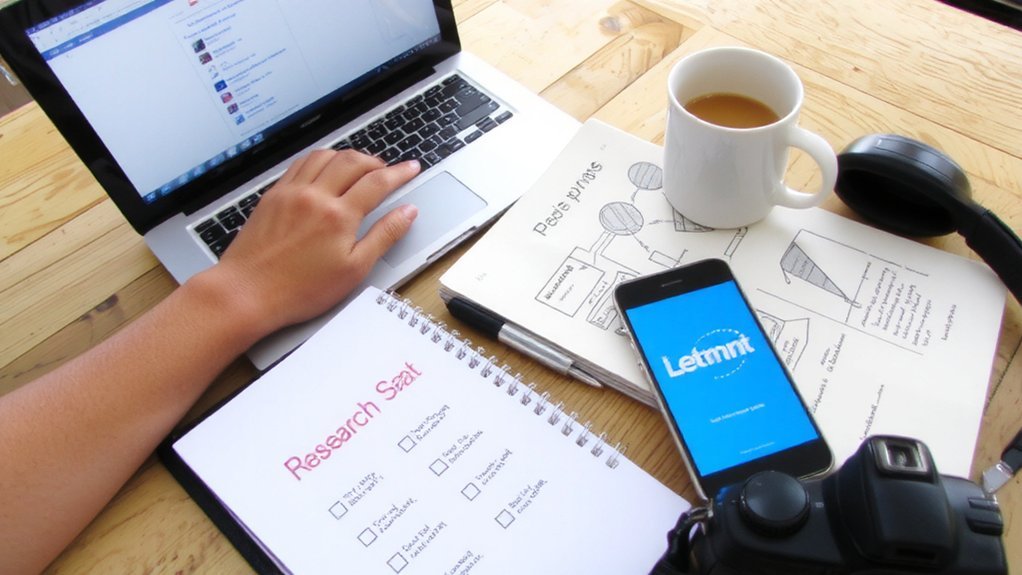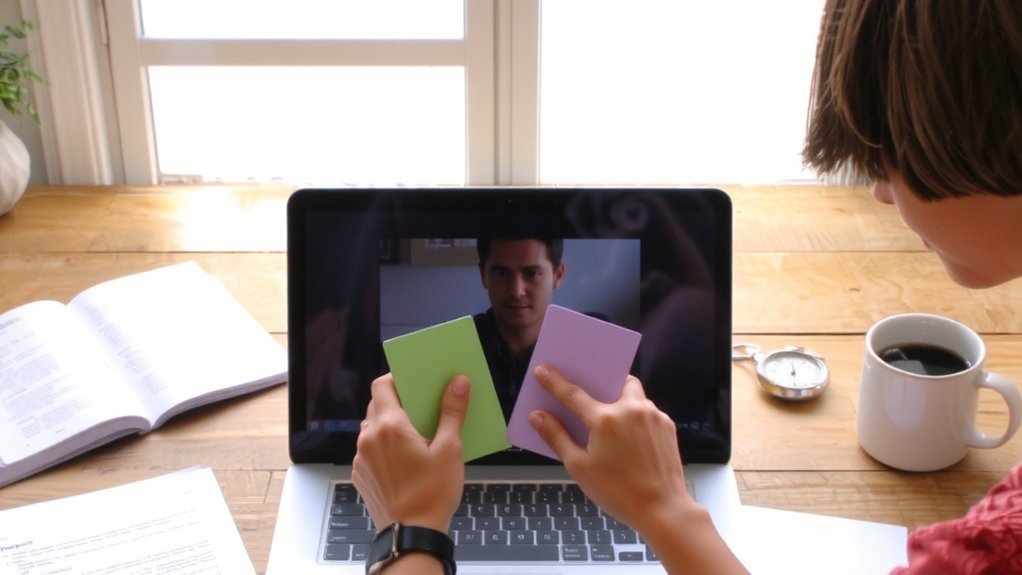You’ll nail more interviews when you prepare with purpose. Start by researching the company and role, rehearse concise STAR examples tied to key responsibilities, and confirm technology and attire ahead of time. I’ll walk you through concrete steps, sample answers, and a follow-up plan to help you feel ready and confident.
Research the Company and Role

How well do you know the company and the specific role? Start by studying the company’s mission, values, products, services, culture, recent news, and competitors so you can speak intelligently about fit.
Visit the website, read press releases, scan leadership bios, and check social media for tone and priorities.
Look at customer reviews and industry analyses to spot challenges and opportunities the employer faces.
For the role, learn where it sits in the organization, who it collaborates with, typical projects, and performance metrics without repeating job description details.
Note how your experiences align with the company’s goals and culture, and prepare concise examples that show initiative, problem solving, and adaptability.
Always remain curious and adaptable during conversations.
Understand the Job Description and Requirements

Before you talk to anyone, read the job posting closely and break it into core responsibilities, required skills, and preferred qualifications.
Note verbs and measurable outcomes so you can link your experience to responsibilities.
Highlight must-have skills and tools; if you lack any, decide how you’ll address the gap (training, related experience, or honest discussion).
Match three to five bullet points on your resume to the posting’s top priorities and weave specific results—metrics, projects, timelines—into descriptions.
Capture keywords for your application and LinkedIn so applicant tracking systems spot you.
Identify ambiguous duties to ask about during the interview and prepare concise examples that demonstrate transferable strengths.
This focused approach keeps your prep efficient and directly relevant to what hiring managers want and save time.
Practice Common and Behavioral Interview Questions

Why rehearse common and behavioral questions? You’ll sharpen phrasing, reduce filler words, and build confidence.
Start by listing typical questions for your role and industry, then practice answering them out loud.
Use a mirror, record yourself, or run mock interviews with a friend or mentor who’ll give honest feedback.
Time your responses and vary wording so answers don’t sound memorized.
Focus on clear structure, concise language, and linking your skills to job needs without reciting bullet points.
Practice handling curveballs and follow-ups so you stay composed.
Review weaker answers and iterate.
Regular, focused rehearsal turns nervousness into calm readiness and helps you communicate under pressure during the actual interview.
Repeat this routine until your delivery feels natural, adaptable, and ready for any interviewer confidently.
Prepare Your STAR Stories and Examples

Crafting STAR stories gives you ready, structured examples that prove your skills under pressure.
Use Situation, Task, Action, Result to map each example: briefly set context, state your responsibility, describe specific steps you took, and quantify outcomes.
Pick three to five stories covering leadership, problem-solving, teamwork and adaptability; customize details for the role.
Practice concise phrasing so you can deliver each story in 45–90 seconds without sounding rehearsed.
Anticipate follow-up questions and note metrics or lessons learned you can add.
Keep a few backup anecdotes for gaps or unexpected prompts.
Review and refine stories until they feel natural, focused, and evidence-based.
When interview day arrives, you’ll pull relevant examples quickly and confidently.
Share credit honestly, highlighting your direct contributions and measurable improvements when relevant.
Master Video and Phone Interview Technology

Testing your tech ahead of time prevents avoidable glitches and nervousness: check your internet speed, camera framing, microphone levels, and lighting; update and rehearse with the exact video platform the interviewer will use; close distracting apps and turn off notifications; have a charged phone and a backup device or dial-in plan ready; and practice speaking into your headset so your voice comes through clearly while you maintain eye contact with the camera.
Before the call, restart your router and device, close bandwidth-heavy apps, plug into Ethernet if possible.
Test screen sharing, presentation files, and any virtual background you’ll test for glitches.
Confirm camera and mic permissions, and learn mute/unmute.
Join five minutes early to resolve prompts.
If you record or share data, ask permission.
Plan Your Professional Attire and Body Language
While you want your outfit to fit the company’s culture, choose pieces that are neat, well-fitting, and low‑distraction—neutral colors, minimal accessories, and polished shoes—and test the whole look on camera to confirm it reads well for video. Also pick clothing that you’ll move comfortably in so your gestures look natural.
Stand and sit with a straight but relaxed posture, keep your shoulders back, and don’t cross your arms. Maintain steady eye contact by looking into the camera or the interviewer’s eyes, and nod to show engagement. Use purposeful, restrained gestures; avoid fidgeting with jewelry, hair, or pens. Smile genuinely at appropriate moments, control your pace of speech, and breathe steadily to project confidence and calm throughout the interview, and keep movements measured for effect.
Prepare Questions to Ask the Interviewer
After you’ve settled your outfit and practiced confident body language, prepare thoughtful questions to ask the interviewer—doing so shows interest, helps you evaluate fit, and makes the meeting more of a two-way conversation.
Beforehand, research the company, team, and role so your questions go beyond basics.
Ask about day-to-day responsibilities, success metrics, team structure, and upcoming projects or challenges you’d tackle.
Inquire how performance is measured and what growth or learning opportunities exist.
Pose situational questions to reveal culture, collaboration styles, and leadership expectations.
Keep a shortlist of prioritized questions, and be ready to adapt based on what’s already covered.
Close by asking about next steps and the timeline so you understand their process and can follow up appropriately.
Take notes and reflect afterward.
Review Compensation Expectations and Benefits
Because total compensation goes beyond base salary, know your target range and which benefits matter most to you before the offer stage.
Research market pay for the role, level, and location using salary sites and networking so you can state realistic expectations.
List non-salary priorities — health coverage, retirement match, paid time off, flexible work, bonuses, equity, tuition support, and career development — and rank them.
During interviews, ask clarifying questions about benefit specifics and timing without demanding numbers prematurely.
Prepare to explain your range confidently, basing it on data and total-value tradeoffs. If a recruiter brings compensation early, narrow the conversation to ranges and priorities, then pivot back to fit and contributions. That keeps negotiations professional and focused on mutual value and goals.
Follow-Up Strategy and Thank-You Messages
When should you follow up and what should you say?
Send a concise thank-you email within 24 hours to each interviewer, referencing a specific topic you discussed and reiterating interest.
Keep it brief: two to four short sentences plus a closing.
If you promised materials or references, include them promptly.
For panel or sequential interviews, send personalized notes so each person feels acknowledged.
If you haven’t heard back by the date they mentioned, follow up once after that date with a polite status request and renewed enthusiasm.
Avoid daily or pushy messages; space follow-ups by a week if needed.
Use a professional subject line, proofread carefully, and maintain a courteous tone—your follow-up reinforces fit and professionalism.
Track responses to refine your timing and message.
Conclusion
By preparing ahead—researching the company and role, studying the job description, rehearsing STAR stories, practicing responses, checking your tech, and planning attire—you’ll enter interviews calm, confident, and ready to engage. Ask thoughtful questions, know your salary range, and follow up promptly with a concise thank-you. Admit gaps honestly and highlight measurable outcomes. With this preparation, you’ll make a strong, memorable impression and increase your chances of landing the job you’re aiming for right now today.